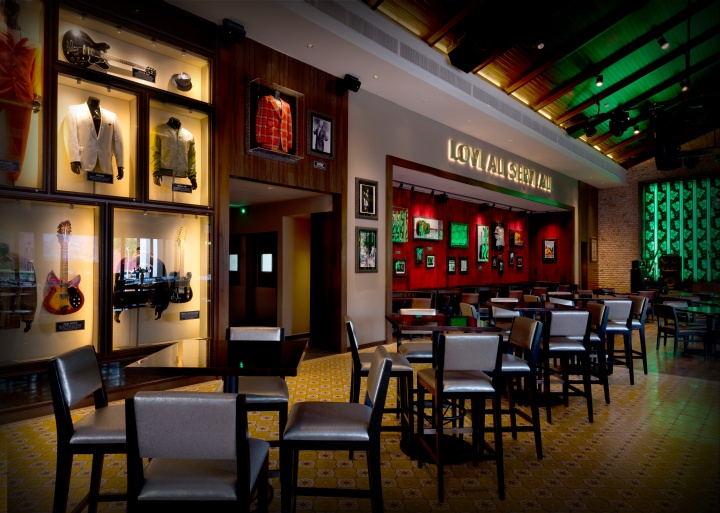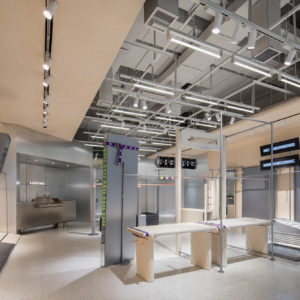


In the heart of Melaka – the historical city listed as a UNESCO World Heritage Site – Hard Rock marked its third spot in Malaysia. The iconic cafe located by the river maintains the design language of neighbouring buildings and successfully transmits the diversified local culture into the vision of famous international brand.

During the 15th century a Chinese princess was sent to the sultan of Melaka in lieu of the tribute to the Emperor. The accompanying court settled down in the state and bonded with local citizens establishing the Peranakan culture – the mixture of Malay and Chinese influences. To meet the standards of Hard Rock International and blend them with the domestic influences, Blu Water Studio reinterpreted the legend and developed the design of the café according to a traditional Melakan house.

Welcoming mood of the old-style veranda was achieved thanks to the terracotta tiles, which lead to the main building entrance. Upon entering, the window display of the silver snake skin vinyl fabric invites guests for shopping at the Rock Shop, while the lounge seating opposite encourages to chill out before the further place exploration.

Here the floor is designed with the use of the local timber known as Merbau. The surface further transforms into Peranakan tiles, which combine the traditional local texture and pattern with the brand colours – maroon red and mustard yellow. The focal point of every Hard Rock Cafe, memorabilia, runs along the left wall to the dining area, where the items, against the background of red velvet, are displayed above circular shaped banquette seating.

High wooden ceiling space with the brick wall at the back, inspired by the architecture of local houses, is completed with the stage showcasing the Melakan motifs. The floral pattern from traditional batik fabric was laser cut in the vertical stripped black metal panels and highlighted by colour changing LED lights.

As the cafe feature, the bar reflects the concept of a traditional courtyard. Due to the bi-fold windows it can be fully opened for customers to gather both outdoor and indoor. The interior is separated from the outside dining by windows inspired from Chinese heritage and coloured glass partitions, which goes around the building perimeter, complementing the whole design with the local impact.



























